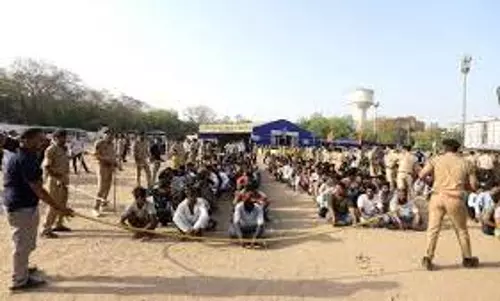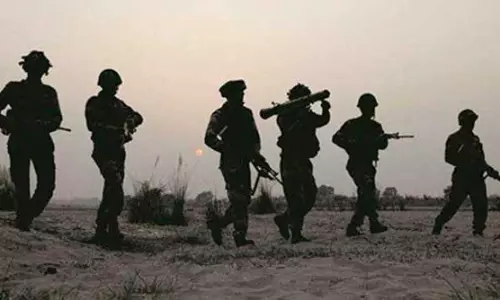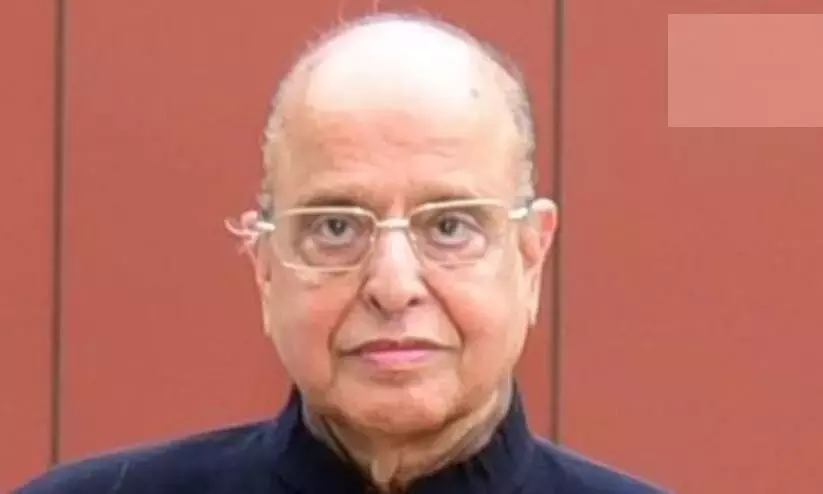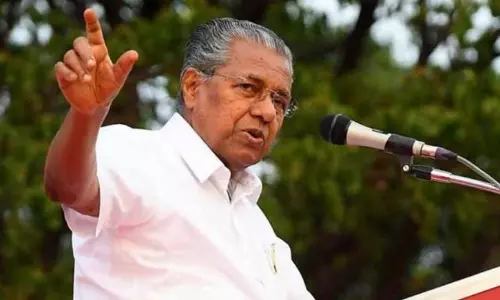
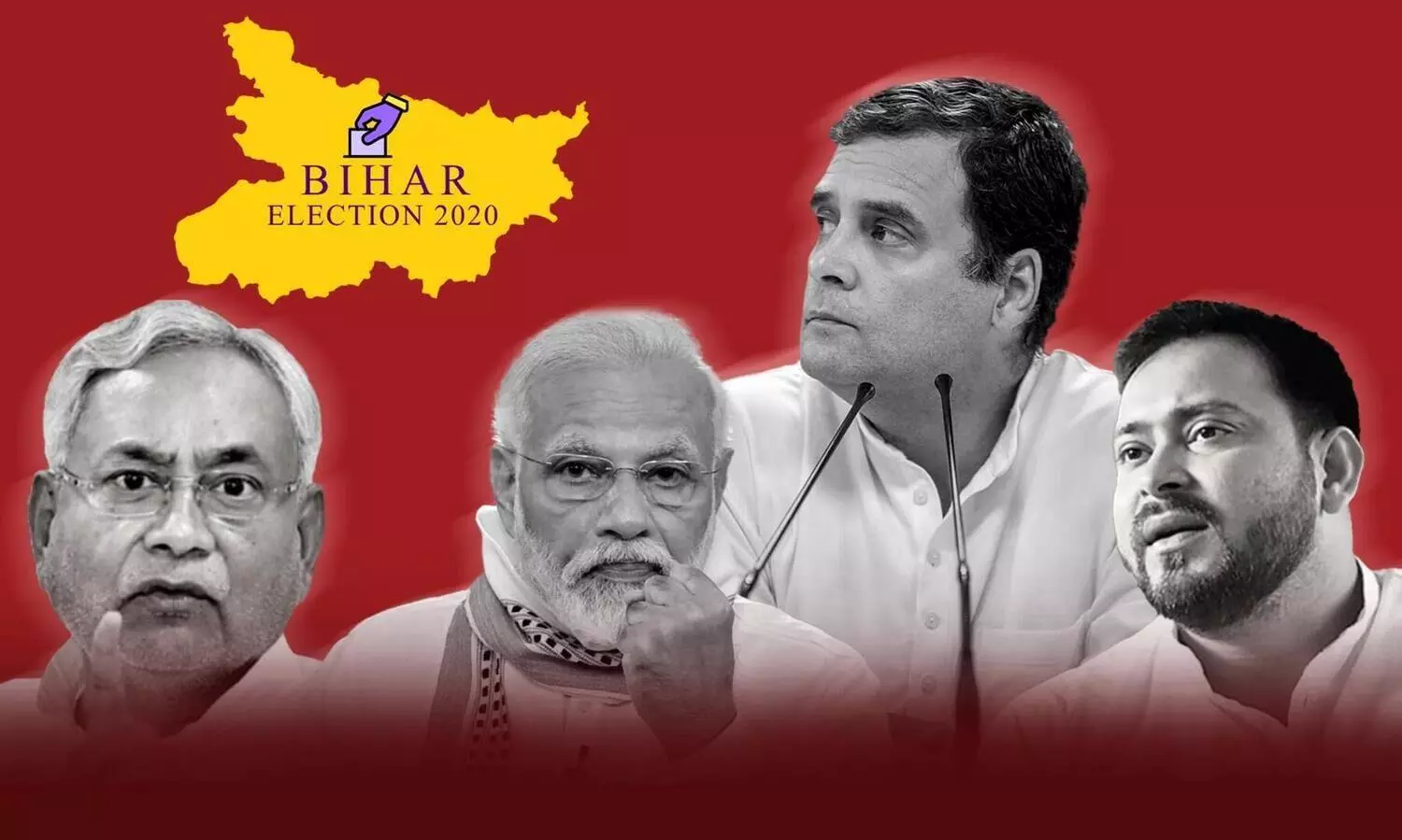
Bihar: The poll that redefined political equations
text_fieldsIn a nail-biting finish, Bihar returned NDA to power again for a record fourth time with 125 seats in the 243 member assembly, belying all exit poll predictions. The mahagathbandhan, which put up a spectacular fight, ended up with 110 seats, with Rashtriya Janata Dal emerging as the single largest party with 75 seats. The BJP ended up being the second largest party with 74 seats.
The counting of votes, which was painfully slow this time, due to increase in the number of booths, took a record 15 hours to finally declare the NDA as a clear winner at midnight. The counting process came under question with the RJD alleging that the officials were partial towards the NDA candidates and were willfully delaying the result of Mahagathbandhan candidates on flimsy grounds to do recounting and declare them as defeated.
The Bihar election, besides the major switch in fortunes of the two main NDA partners, the BJP and JD(U), also had a surprise element in the form of excellent performance by the Left parties, especially the CPI(ML) and the spectacular victory of Asaduddin Owaisi-led AIMIM in the Seemanchal region.
The emergence of AIMIM, which is a Hyderabad-based party, as a force in Bihar is the most singular feature of this election. Asaduddin Owaisi, who had stitched up an alliance with the Bahujan Samaj Party, Upendra Kushwaha-led RLSP and sundry others, had put up 20 candidates, 14 of them in Seemanchal region. Five of his candidates won.
The Seemanchal region of Bihar, which borders Nepal and West Bengal is significant for the reason that it has a dense Muslim population. For example, Purnia in Seemnchal has a 35 percent Muslim population, while Araria has 51 percent Muslim population. Katihar too, in the same region has 45 percent Muslims, while Kishanganj has 70 percent Muslim population. The emergence of AIMIM in this region is significant because so far this had been a stronghold of Congress and Rashtriya Janata Dal. This time there are clear signals that the MY (Muslim-Yadav) combination, which had been a hallmark of the RJD making it a formidable force, has cracked with Muslims deserting it in favour of better alternatives. Out of the 24 seats in this region, Congress had won nine seats, while RJD had won three in 2015. The JD(U) had won six seats in 2015.
The AIMIM, which marked its presence in this region in Kishanganj by-election in 2019, winning the seat, has surprised everyone by winning five seats here: namely Amour, Kochadham, Bahadurgarh, Baisi and Jokihaat. Baisi is the most striking example of the Muslims shifting their loyalties. This seat had been traditionally won by the RJD, but this time AIMIM's Sayeed Rukumuddin wrested the seat from RJD's Haji Abdus Subhan, who ended up third trailing behind BJP's Vinod Kumar coming second.
The fact that the Muslim voter's search for a better alternative is resulting in the BJP's advantage is reflected in the fact that there are 32 seats in Bihar which have a high Muslim population, 30 percent or above, where the NDA has gained substantial ground this time. The division of Muslim votes in these seats has resulted in NDA gaining big this time, with BJP winning 13 seats and JD(U) winning six seats, as against their tally of seven in 2015. Earlier, majority of these seats had been won by the RJD-Congress combine. This time, however, the Congress could win only five seats while the RJD won four.
The role reversal of BJP and JD(U) in this election is another striking feature. The BJP has emerged with more seats than the JD(U): winning 74 seats against JD(U)'s 43. But so far the BJP leadership has maintained that JD(U) leader Nitish Kumar would still be the chief minister. Sources, however, say that the BJP leaders are hoping Nitish Kumar would decline the post himself since his tally is woefully smaller than BJP.
The emergence of the Left parties, is another striking feature, especially the good show put up by the CPI(ML). This was the first time the Left had joined hands with RJD and Congress. They had contested 29 seats and won 16. The CPI(ML) has won 12 seats, while the CPI and CPM won two each.
The poor show by the Congress party seems to be a major factor pulling the grand alliance down. The Congress party had contested 70 seats but could win only 19. This, many Congress leaders had earlier told this writer, was the best opportunity for the party to make a comeback, however that was not to be. The Congress has been reduced to a fringe player in Bihar with the onset of social justice politics, especially the emergence of Lalu Prasad Yadav's RJD, in the nineties. It reached its lowest ebb in 2010 winning only four seats. In 2015, it aligned with the RJD but still could win only 27 seats. This time, however, hopes were high in Congress.
The emergence of BJP as a bigger party than the JD(U) in Bihar is another striking feature this time. Since the two joined hands in 2005, the JD(U) had been playing the role of Big Brother in Bihar but this has changed this time. Both had contested almost an equal number of seats, but the BJP won 74 seats, with 19.5 percent votes, while the JD(U) won 43, with 15.4 percent votes. The role of Chirag Paswan-led LJP is attributed to be a factor in reducing the JD(U) tally. Though the LJP could win just one seat, it definitely played the spoiler for JD(U). There are at least 30 such seats where the number of votes polled by the LJP candidates is the same as the margin of loss for the JD(U) candidate. The LJP had fielded 22 BJP rebels against the JD(U) candidate. Though all of them lost, they spoiled the chances of the JD(U) as well. The LJP, which had parted ways with NDA just before the election, has polled six percent votes though, which is an increase from its four percent in 2015. Chirag Paswan had specifically targeted Nitish Kumar and had vowed to oust him from the chief minister's office.
The RJD, which was popularly believed to be the favourite this time, with Tejashwi Yadav drawing huge crowds in his rallies, may have missed the post, but has still emerged as the single largest party with 75 seats and 23 percent vote share. What is significant to note here is the fact that there are many seats where the RJD alleges that the administration, at the behest of Nitish Kumar, deliberately manipulated the counting to declare its candidates as defeated. These are seats with a very slim margin of votes. For example, in Hilsa assembly constituency, the RJD says, its candidate Shakti Singh Yadav, who was originally the winner, was declared defeated by 12 votes after recounting, against JD(U)'s Krishna Murari Sharma. According to RJD leaders, there are at least eight seats where the margin of defeat for the RJD candidates was less than 1000 votes, and where originally the RJD candidates had been shown as winners. In Barbigha also, JD(U)'s Sudarshan Kumar was declared the winner after a great delay and recounting, defeating Congress's Gajanan Shahi by 113 votes. Similarly in Bhore constituency, the RJD candidate was declared defeated by 462 votes, after recounting and delay.
Justifying the recounting, the EC officials said in seats where the margin was very slim, the EC is mandatorily bound to count rejected postal ballots, hence the recounting. But RJD's Manoj Jha has alleged that the recounting was only done for seats where the NDA candidates were losing, not for those seats where the mahagathbandhan candidates were losing with equally slim margins.
It is important to mention here that Bihar's was the first major election to be held amidst the pandemic and the result was delayed due to the increase in the number of booths which was done to maintain social distancing.









